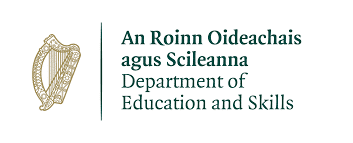This article was written for the Irish Times by our European History Lecturer Dr Ida Milne.
Rite&Reason: Social distancing can help us all protect our clergy, police and health workers
Priests visiting the sick and dying are effectively frontline workers in epidemics, and are more likely to catch the disease and even die themselves. Several are reported to have died in Italian dioceses badly affected by the coronavirus.
Many Irish priests and clergy are currently self-isolating. Some are even ill because they have visited Covid-19 sufferers; almost one-quarter of diagnosed cases here are healthcare workers.
Newspaper coverage and death statistics from the Irish experience of the 1918-1919 influenza pandemic show that people whose jobs were in the frontline then too were more likely to catch the disease because of frequent exposure, and therefore more likely to die from it.
This suggests that all these groups today should take appropriate precautions. Masking was the norm for many of these sectors in 1918. Given the shortage of good-quality masks for hospital care workers, who need protection most for all our sakes, these groups might take advice on making their own.
This is one of the many lessons that can be learned from the history of the 1918-1919 pandemic history for the current crisis: Covid-19 is a different disease, but the risk is comparative.
Doctors in the Poor Law medical dispensary service paid 100,000 extra home visits back then, often working around the clock. Eye-witness accounts tell of them paying house calls at 3am during the peak weeks. As they fell ill with the disease themselves, their employers, the local Poor Law Union boards of guardians would have to find scarce replacements for them, and often had to replace the replacements.
Working flat out
Hospital medical staff were similarly working flat out in a desperate bid to treat patients from this disease which they had few weapons to fight. DW McNamara, then a junior doctor in Dublin’s Mater hospital, spoke of all the wards bar one female and one male surgical ward being turned over to treating influenza patients, and of the huge pressure on doctors and nurses.
Clergy of all denominations, like medical workers, were affected in 1918-1919. Fr Murray, chaplain of the Mater hospital, caught flu while ministering to the hospital’s patients, and died from pneumonia in October 1918, during the second and worst wave of the epidemic in Dublin.
Churches did not tend to cancel services back then, although it happened in some of the worst-hit areas, like north Kildare. The Catholic archbishop of Dublin, William Walsh, and other clergy advised on refraining from fasting, on not holding wakes and even on keeping the bodies of flu victims outside the church for funerals.
Other workers heavily impacted in the Ireland of 1918-1919, identified from newspaper reports of illness, include police, journalists, politicians, teachers, bank workers, factory workers, farm and creamery workers, prison warders, soldiers, publicans, postal staff, shop workers and their families. The pages of the regional press are replete with stories of illness and staff shortages – and obituaries – among these sectors.
Dead city dwellers
Most of the deaths took place in the second and third of three Irish waves of that pandemic, in October and November 1918, and February to April 1919. In Kilkenny, the long lists of city dwellers dead in the last week of October included auctioneer Philip Hogan, grocer Thomas King, Kilkenny prison chief warder George Cullen and Chrissie Brophy, a shop assistant. In Gorey, the dead that week included two young children from a draper’s family on Main Street.
Reports of police being ill, and the force being depleted, are commonplace in the regional and Dublin press. James Delaney, a Dublin Metropolitan Policeconstable stationed at Lad Lane, went down with the flu in December, and returned to work before he was fully recovered as so many of his colleagues were ill. He died from pneumonia on the job.
Dealing with the public made all these sectors more vulnerable. History tells us why we, the public, must be aware of the need to protect ourselves and essential services in this pandemic by staying at home as much as possible. We must stay a safe distance away from each other when we have to go out, and make sure we wash our hands and cough into our elbows.
People in these jobs need to be extra cautious. Simple measures can make the history of the contemporary even less dramatic than it already is.




